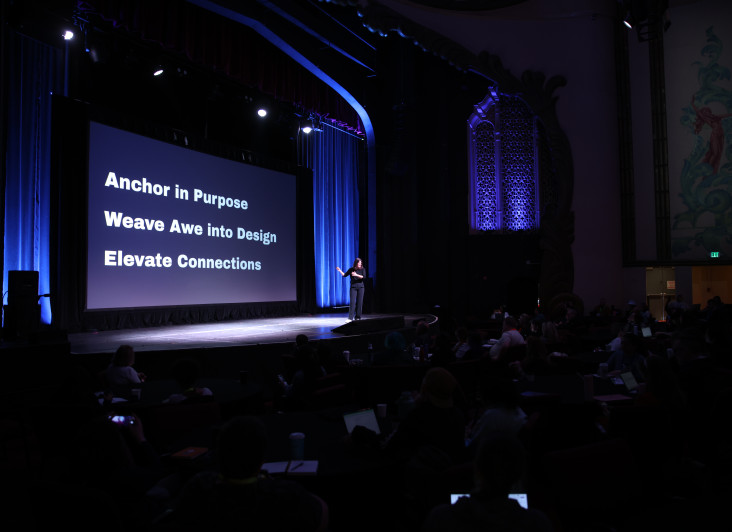How to nudge positive behaviours in your online community

The concept of behaviour nudging
Behaviour nudging is used across various industries to try and guide customers toward a desired action.
Think about the last time you were in a supermarket and reached the checkout. You may have noticed chewing gum, cereal bars, or some other small and relatively cheap product, and picked it up to add to your shopping.
In your eyes, this may have been a last-minute Oh I need that! type of purchase. However, it’s no accident that these products are placed here.
This is a carefully crafted decision by the supermarket to ‘nudge’ you into buying something you may not have necessarily thought of.
So how does behaviour nudging relate to online communities?
Behaviour nudging and community engagement
The success of an online community is dependent on one key behaviour - engagement. That's why the majority of community leaders measure community success with metrics like active users and community participation.
As such, community managers need to design an environment where engaging feels like a natural and easy choice for members.
Behaviour nudging in an online community is about creating subtle cues and influences that encourage positive behaviours like:
Participating in discussions
Contributing content
Attending events

Applying good nudging with the participation ladder
Good nudging tactics are not a one-size-fits-all. Depending on engagement levels in the community will depend on how you can encourage positive behaviour.
If we use the participation ladder, we can section our members by behaviour and level of involvement to better understand what type of nudging will work best for them.
Let’s look at three behaviour nudging strategies you can use to encourage more engagement.
Timely communication
If we start with those who have low engagement, your observers and networkers, one of the best behaviour nudging strategies you can use is timely responses.
Observers and networkers are passive members, and often need an extra push to become more active. Timely communication helps to catch their interest early on and guide them towards taking their first steps inside the community.
For example, if a new member signs up but hasn’t participated yet, sending them a personalised message within 24 hours or introducing them to an active discussion can encourage them to get involved.
Customised messaging
Members in the middle of the participation ladder - your creators, leaders, and buddies - benefit greatly from content that feels relevant and tailored to their interests.
Personalised content encourages them to deepen their involvement by highlighting relevant opportunities and acknowledging their past activities. One of the ways you could do this is by referencing a piece of content they have recently written and draw them into ongoing conversations.
Say you have a running community and a member named Sarah is posting her tips during marathon training. You may send a message like:
Hey Sarah! Your recent marathon training tips have been super insightful. Jack just posted a new question about nutrition during long runs, and we think your knowledge could really help!
This personal touch helps Sarah feel recognised by you for her contributions. Creating a fair value exchange between you and your community members (they contribute and you recognise and reward) is what will encourage continued positive behaviour.
Additionally, you’re introducing Sarah to another community member you think she could help. This encourages peer-to-peer networking and engagement, which is considered to be the primary reason for online communities. Mentioning another member with similar interests will nudge Sarah up the ladder from creator to a leader/buddy role, while also encouraging Jack to continue participating.

Positive framing
Everyone wants to know their participation is worthwhile, especially those at the top of the ladder! That’s why positive and rewarding language is crucial for highly involved community members, like ambassadors, influencers, and mentors.
These members are already deeply engaged, so use positive framing to help sustain their motivation. You might use positive language in automated messages to celebrate their regular contributions. You could also highlight their achievements publicly and continue to offer them opportunities for further involvement.
How can social proof encourage positive behaviour?
Social proof involves using the behaviour of others to influence individual actions and is a fantastic way to nudge your members.
Low involvement members can be encouraged to participate more when you showcase success stories of similar members who transitioned to higher engagement levels. They can relate to those members and see the true benefit of engagement.
For medium and highly engaged members, recognise and celebrate their achievements. Using ‘top voice’ badges or social sharing features can help you highlight these positive contributions, encouraging others to follow suit.

5 steps for implementing positive behaviour
Making these changes might seem like a lot of work, but you can encourage positive behaviour without significant technical changes to your online community.
Our five actionable steps are:
1. Segment your community
Always start by understanding where each member falls on the participation ladder. This allows you to tailor your nudging strategies accordingly. You can then use data to create personalised experiences for each segment.
2. Use automated systems
Set up automated systems to remind members about ongoing discussions or events. People lead busy lives and their personal time is valuable. If you’re sporadically reaching out to them, then there’s a good chance you’ll miss them.
Regular messages sent at optimal times will keep their attention on your community. And don’t forget to personalise these reminders too!
3. Create consistent environment
You can set up all the automated systems you want, but if the tone of voice feels ‘off’ from the rest of the online community and brand, then members won’t engage.
Generic messaging sent to everyone loses its value and makes members feel disconnected. That’s why you should make adjustments to your automated messages to ensure brand-community synergy.
Go back and think about why people signed up to your community in the first place. What did they like about your brand that made them want to get involved in the community space? The ethos and style represented at the beginning needs to be carried through to keep them motivated to stay.

4. Highlight achievements
Always reward positive behaviour! If people are engaging, they need to know their contributions are valued by you and other members of the community.
By featuring new members' stories or showing how others have benefited from participating, you will naturally encourage less-engaged members to become more active.
5. Introduce visual indicators
Badges are a great visual cue to show what can be achieved with regular engagement.
Think of the blue tick on social media platforms and what that represents. It shows other followers that this particular individual is important to many people, what they say matters, and that the social media platform validates that.
Community engagement badges work in a similar fashion. It shows that you, as the community manager, appreciate what this member brings to the community and that positive behaviour will not go unnoticed.
Improve behaviours in your online community
If you’re looking to encourage positive behaviour in your community, let’s talk! Steadfast Collective can work with you to implement engagement strategies that align with your brand.
From crafting community-first applications to building membership platforms, we help your online community become a welcoming place where members regularly engage. Get in touch now to see how we can assist you.
More Articles

Can you track it?
Every budget is being put under the microscope right now, and quite right too.

When to Build Your Own Membership Platform (and When Not To)
I’ll let you in on a secret, not every membership organisation needs a bespoke membership platform.

Design for AWE
Anchor. Wonder. Connection. The blueprint for unforgettable memberships.

